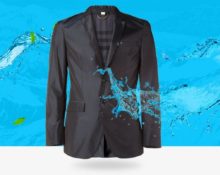Humanity has long learned to use the fur of domestic animals for its needs. The animals were shorn, the wool was prepared, and then things were knitted from the yarn and fabric was made. Unlike today, where everything is made using special equipment except shearing, our ancestors made yarn by hand.
The process was quite long and laborious. To process the sheared fur into finished thread, a lot of time was spent at the spinning wheel. It is not for nothing that in Russian fairy tales, girls and women are constantly described as sitting at this device.

Collecting wool from animals
The coat is heterogeneous and consists of down, soft and guard hairs. If the awns are not separated, the final product made from such raw materials will be prickly and unpleasant. Therefore, in order to avoid manual sorting, they first carry out “combing”, obtaining the most delicate downy tow material. This is exactly what weightless Orenburg scarves are made from.Later, when cutting, I grab a little more than half the length of the hair.

This material is also quite soft, easy to process and forms the basis for simple yarn. It was combed, getting rid of various natural debris. Sometimes before spinning the raw material was soaked to give it softer properties, followed by drying in the sun. The wool remaining after the final shearing is either combed to remove guard hairs, followed by soaking and drying, or left untreated on coarse material.
Spinning equipment
Before automation of the process, only two main tools were used: a spindle made of wood and a weight for a spinning wheel (whorl). Often at home they managed without it.
To simplify the process and make it more convenient, they used a board (spinning wheel) fixed at face level.

Manufacturing technology
- A small fur ball of tow was tied onto a spinning board.
- Carefully pulled out a small strand of wool, up to 5 centimeters wide and up to 10 centimeters long.
- I twisted it into a thread using a spindle until the thread begins to gather in rings.
- The finished piece was secured to the spinning wheel at one end.
- The next piece of fluff was connected to the free end and twisted with a spindle until rings were formed.
- Then the process continues the same way, gradually adding new portions of tow.
- Excess thread that interferes with work is wound on a spinning wheel.
When a fairly large amount of finished material is formed, it is twisted into a ball and continues to be spun again. If the thread broke during the process, its ends were moistened, a little fluff was added and twisted again.

In order to obtain multi-colored, practical material for future clothing in which one could work, a variety of natural dyes were used. As a rule, these were decoctions of plants that gave the desired color, but sometimes mineral compounds, like ocher, were used.
After preparing the shorn wool, it was placed in a special vat with ready-made dye and boiled for some time. After drying, we carried out another combing to soften and untangle the tow. But most of all, the dazzling white color of the finished yarn was valued.
As you can see, it was quite a long and painstaking work. But, having spent so much effort and so much time, our ancestors provided themselves not only with warm clothes for cold winters, but also with the most exquisite things that to this day amaze the whole world with their quality and originality of execution. It would be useful to recall Orenburg and Pavlovo Posad products, which have high value and demand in Western countries.


 1
1





